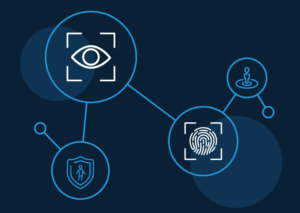The internet has revolutionized the way we live and work, providing us with unprecedented access to information, communication, and entertainment. However, this vast online world also comes with its share of risks and dangers. Cybercriminals are constantly devising new ways to exploit vulnerabilities and steal sensitive information. Navigating a world of online threats can be challenging, but with the right knowledge and tools, you can stay safe in the digital age.
One of the most significant online threats is phishing attacks. Phishing attacks are fraudulent attempts to obtain sensitive information, such as usernames, passwords, and credit card details, by disguising as a trustworthy source. These attacks often come in the form of emails or text messages that appear to be from legitimate companies or organizations. To stay safe from phishing attacks, you should be cautious of unsolicited emails and avoid clicking on links or downloading attachments from unknown sources.
Another online threat is malware. Malware is a type of software designed to harm or disrupt computer systems. It can be spread through email attachments, downloads, or infected websites. Malware can cause significant damage, such as stealing sensitive information, encrypting data, or disrupting computer systems. To protect yourself from malware, you should install reputable antivirus software, keep your operating system and software up to date, and avoid downloading or opening suspicious files.
Social engineering attacks are another common online threat. Social engineering attacks involve manipulating individuals to reveal sensitive information or perform an action that benefits the attacker. These attacks can come in the form of phishing emails, phone calls, or social media messages. To avoid social engineering attacks, you should be wary of unsolicited requests for personal or financial information and verify the identity of the person or organization before providing any sensitive information.
Online scams are also a prevalent online threat. Online scams involve fraudulent schemes that trick individuals into providing money or personal information. These scams can come in the form of fake online stores, investment opportunities, or lottery scams. To avoid online scams, you should be cautious of offers that seem too good to be true and research the legitimacy of any offers or opportunities before providing any personal or financial information.
Finally, online harassment and cyberbullying are significant online threats, especially for children and teenagers. Online harassment involves using online platforms to intimidate or harm others, while cyberbullying involves using technology to bully or harass others. To stay safe from online harassment and cyberbullying, you should educate yourself and your children about online safety, set privacy settings on social media accounts, and report any harassment or bullying to the appropriate authorities.
In conclusion, navigating a world of online threats can be challenging, but with the right knowledge and tools, you can stay safe in the digital age. To protect yourself from online threats, you should be cautious of unsolicited requests for personal or financial information, avoid clicking on links or downloading attachments from unknown sources, install reputable antivirus software, keep your operating system and software up to date, and report any suspicious activity to the appropriate authorities. By staying vigilant and informed, you can enjoy the benefits of the internet while staying safe from online threats.







Be First to Comment